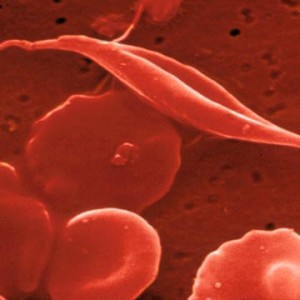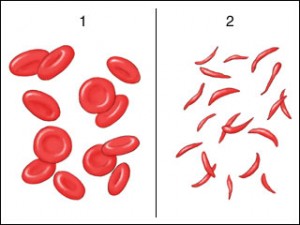July 10, 2009
 There are 3.4 million cases of anemia in the United States with a rate of about 4,500 deaths per year. Anemia is a condition in which are not enough healthy red blood cells in the body, which can be detected when there is an insufficient level of hemoglobin in the blood. Hemoglobin are iron rich proteins that carry oxygen from the lungs to all parts throughout the body. This can usually be diagnosed with iron supplements to aid a patient deliver oxygen rich blood throughout the body.
There are 3.4 million cases of anemia in the United States with a rate of about 4,500 deaths per year. Anemia is a condition in which are not enough healthy red blood cells in the body, which can be detected when there is an insufficient level of hemoglobin in the blood. Hemoglobin are iron rich proteins that carry oxygen from the lungs to all parts throughout the body. This can usually be diagnosed with iron supplements to aid a patient deliver oxygen rich blood throughout the body.

However there is a common form of anemia called Sickle Cell Anemia. This strain of anemia is unfortunately a chronic, incurable disease that cannot be cured with iron supplements. This is an inherited blood disorder that affects normal red blood cells, having disc-shapes and doughnut appearances in the middle, by making the hemoglobin defective. After hemoglobin molecules give up the oxygen, the abnormal hemoglobin cluster together and form long, rod-like structures which cause red blood cells to become stiff and take form of a sickle shape. These are very stiff and sticky; the common problem and symptom of this disease is that the sickle-shaped red blood cells tend to form clumps and get stuck in narrow blood vessels, blocking the flow of blood in the body. Such clumps as these will block blood flow in blood vessels leading to limbs and organs; blocking these will probably cause pain, serious infections, and organ damage. As a result, patients will most likely experience tiredness, fatigue, or shortness of breath which can cause problems carrying out routine activities. I hope nanotechnology can solve this dilemma as soon as possible to help these people.

http://www.wrongdiagnosis.com/a/anemia/stats.htm
http://www.anemia.org/patients/faq/
http://www.sicklecelldisease.org/about_scd/index.phtml
http://www.nhlbi.nih.gov/health/dci/Diseases/Sca/SCA_WhatIs.html
http://www.ornl.gov/sci/techresources/Human_Genome/posters/chromosome/sca.shtml